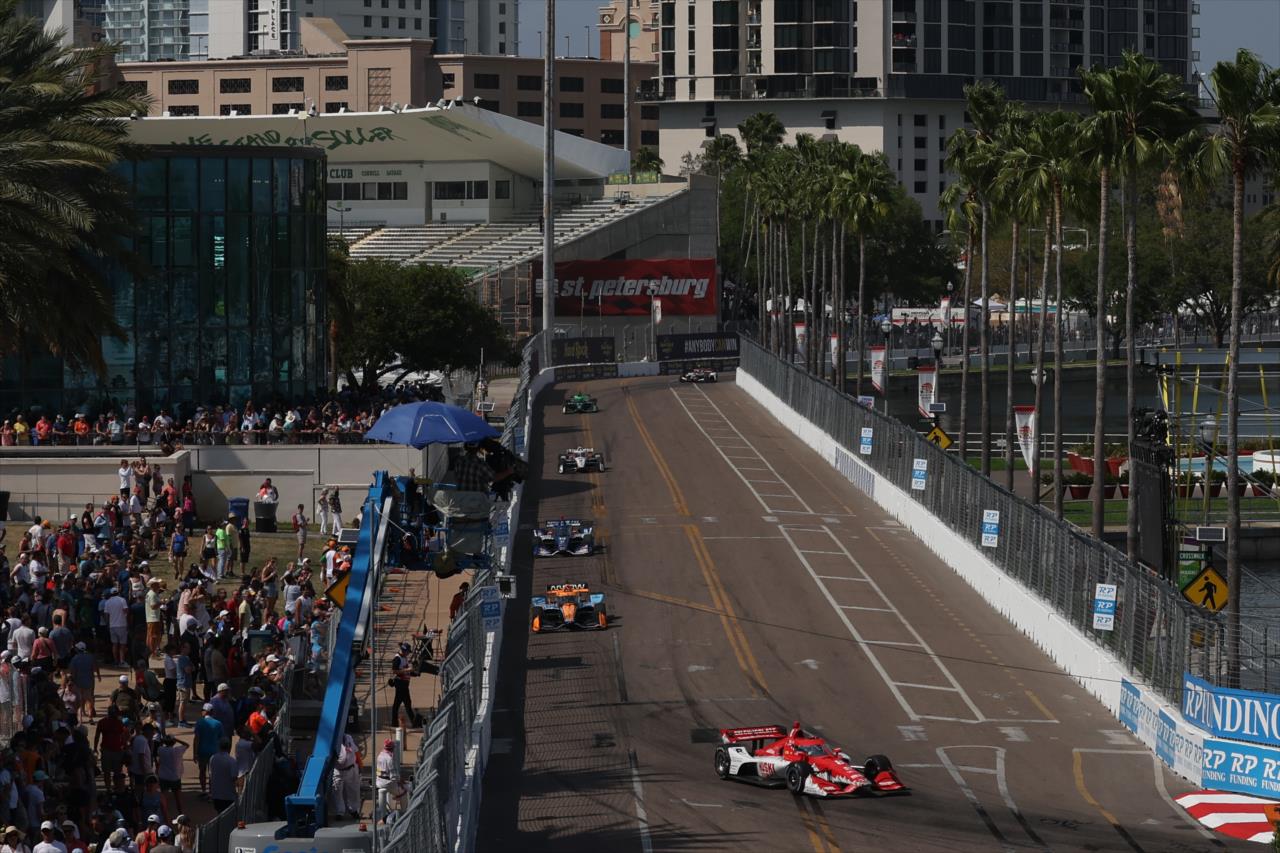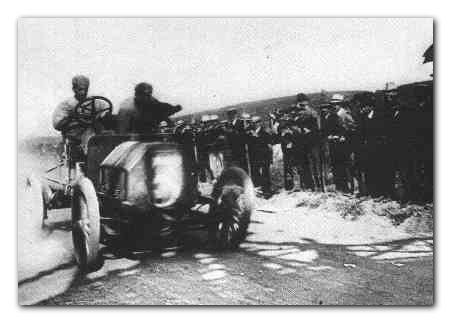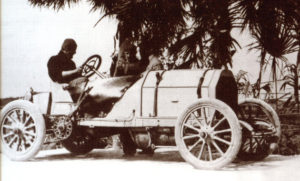The traditional NTT IndyCar Series season opener, the Grand Prix of St. Pete in Florida, gets underway this Sunday with a 27-car grid including five rookies, with Josef Newgarden and Felix Rosenqvist locking out the front row for Sunday’s 100-lap race.
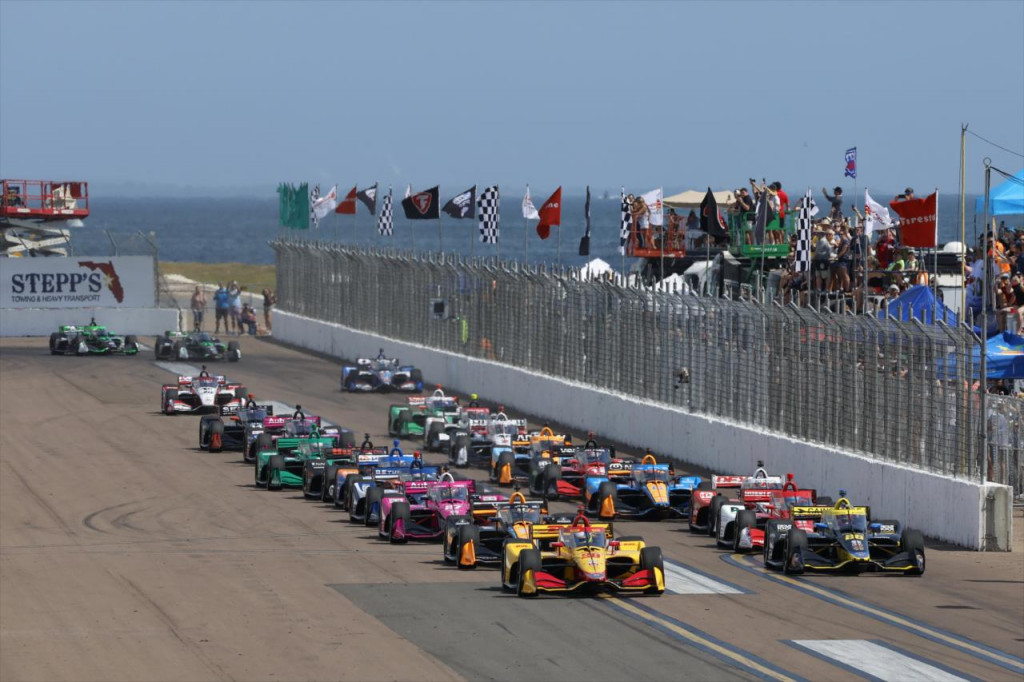
- Race preview/qualifying
- Full qualifying results
3 min read
IndyCar returns to St. Petersburg, Florida for it’s season opener in what will be the 21st running of the Grand Prix of St. Pete; a 100-lap, 180 mile race around the streets of downtown St. Pete and the Albert Whitted Airport with the race starting at 12pm ET/4pm UK time.
The 14-turn temporary street circuit never fails to bring the action as last year’s race was won in the final laps as Pato O’Ward’s car temporarily lost power, allowing Marcus Ericsson to drive by and take the checkered flag three laps later.
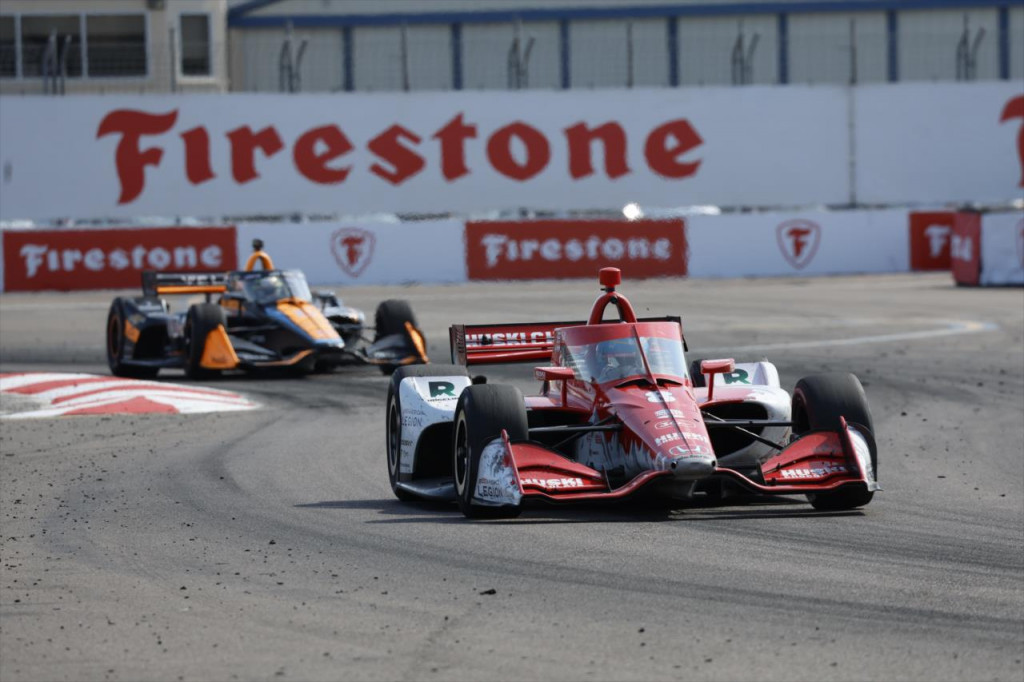
Saturday’s qualifying saw Team Penske’s two-time St. Pete winner Josef Newgarden put his No. 2 PPG Chevrolet on pole with a 59.5714 second lap.
Newgarden said: “I get jacked up every time I show up for an IndyCar race. This is a rockstar team.”
One of Newgarden’s main goals for the 2024 season was to secure a pole position, It is Newgarden’s third St. Pete pole, having gone without a pole in the 2023 season, last being on pole for the 2022 Detroit Grand Prix at Belle Isle.
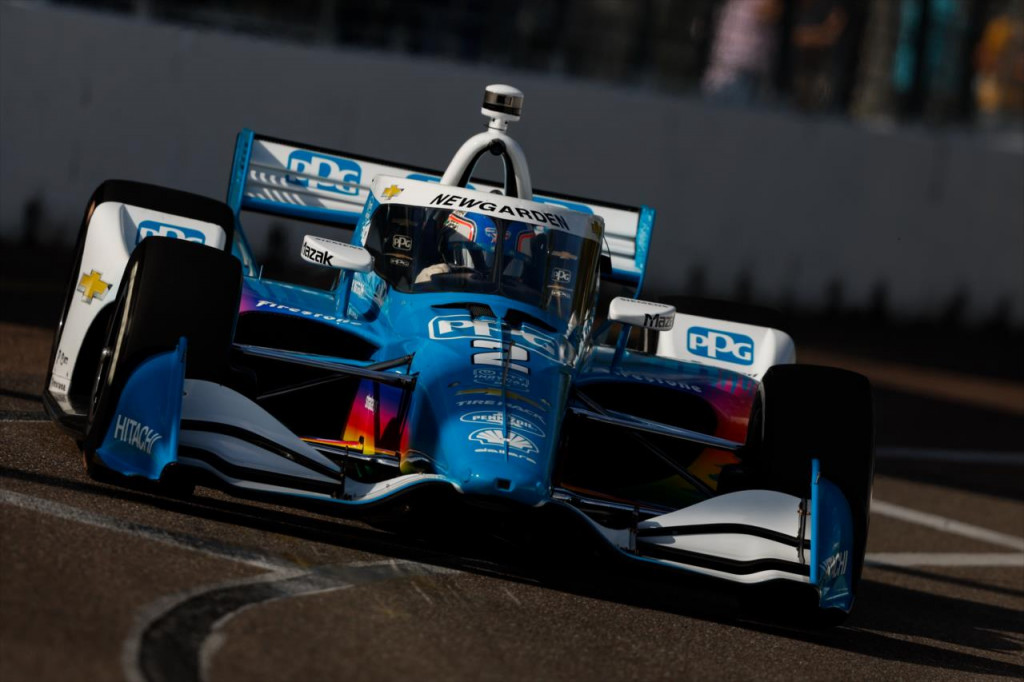
Felix Rosenqvist, now racing for Meyer Shank Racing after being replaced at Arrow McLaren, joins Newgarden on the front row, having done a 59.5772 lap.
Rosenqvist said: “We don’t want to get carried away; the race is a different challenge. But we had a feeling from practice, from rolling off the truck, and that’s great.”
Rosenqvist broke the track record in the Group of 12 qualifying session with a lap of 59.2706 to advance to the Firestone Fast Six, beating Will Power’s 59.3466 lap in the Group of 12 session in 2022.
Six-time IndyCar champion Scott Dixon could only manage an 11th starting place. Dixon is still winless at St. Pete after 19 previous attempts.
Will Power also failed to make the fast six, with an eighth-place effort. Power had secured nine of the last 14 poles at St. Pete, also being a two-time winner, winning in 2010 and 2014, with Newgarden winning the 2019 and ’20 race respectively.
Tom Blomqvist was the best of the rookies, qualifying 17th with a lap time of 59.9968, driving for Meyer Shank Racing
Graham Rahal, Colton Herta, Scott McLaughlin, and Marcus Ericsson also have wins at St. Pete; 2008, 2021, 2022, and 2023 respectively.
Different for this years’ race is the turn three repave, removing heavy bumps that means drivers can now go flat out through the corner.
Also different is the use of lighter chassis components on the cars including a new 3D-printed titanium aeroscreen top frame, saving seven pounds, as well as the switch to a magnesium gearbox casing and bellhousing. This is all in preparation for the arrival of the 2.2-litre twin-turbocharged V6 engines with hybrid technology this summer.
Catch the 2024 Grand Prix of St. Pete on Sunday at 12pm ET/4pm UK time.
Full qualifying results
- Josef Newgarden
- Felix Rosenqvist
- Pato O’Ward
- Colton Herta
- Romain Grosjean
- Marcus Ericsson
- Rinus VeeKay
- Will Power
- Scott McLaughlin
- Marcus Armstrong
- Scott Dixon
- Christian Lundgaard
- Alex Palou
- Santino Ferrucci
- Alexander Rossi
- Callum Ilott
- Tom Blomqvist (R)
- Kyle Kirkwood
- Linus Lundqvist (R)
- Agustin Canapino
- Christian Rasmussen (R)
- Graham Rahal
- Kyffin Simpson (R)
- Sting Ray Robb
- Colin Braun (R)
- Pietro Fittipaldi
- Jack Harvey
Featured Image: 2023 GP of St. Pete (Photo by Chris Owens/Penske Entertainment)
